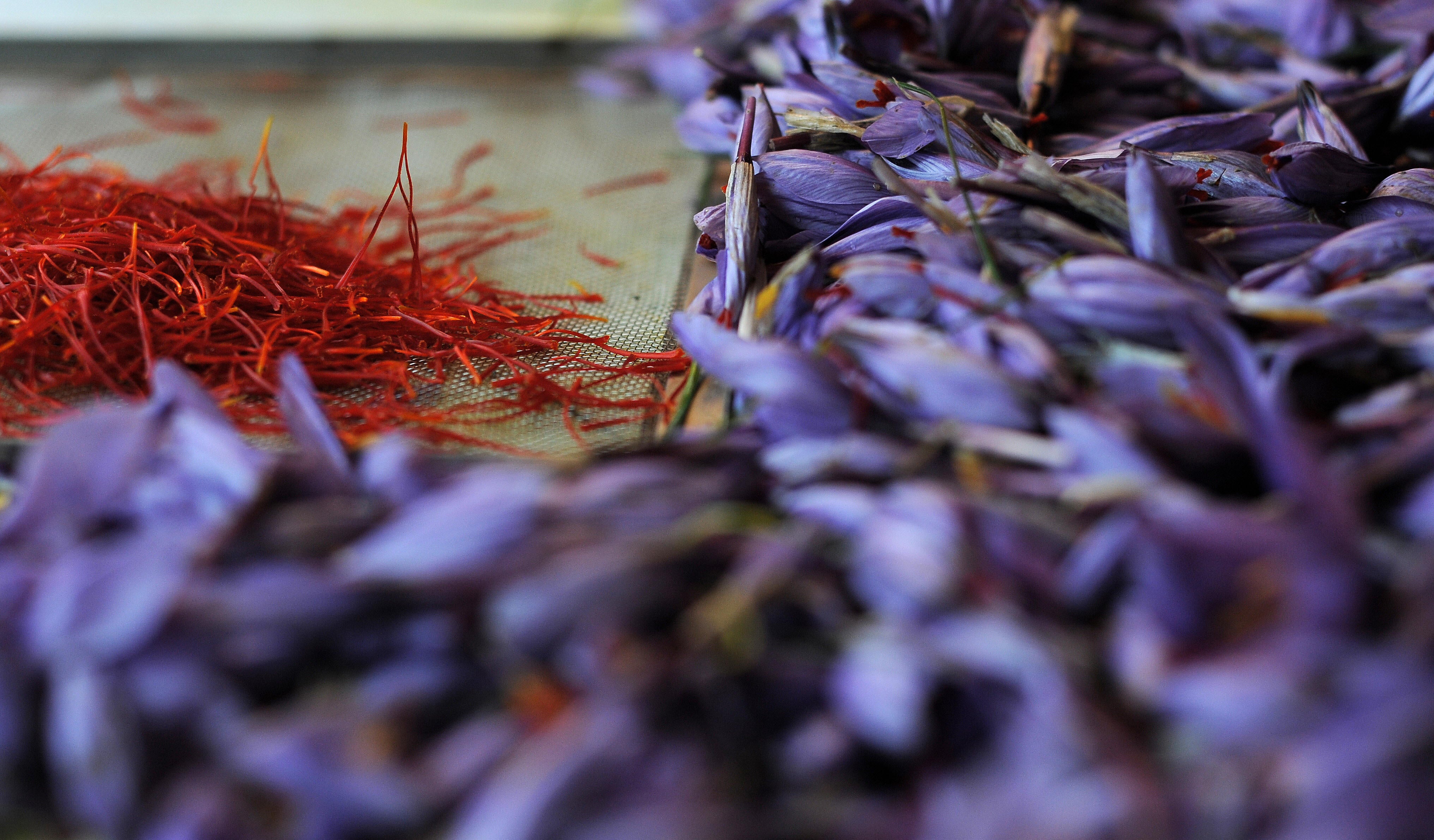The ‘red gold’ lifting women out of poverty in Morocco’s rural communities
Saffron production is transforming rural communities, and women are at the centre of a boom in cultivation

This article first appeared in our partner site, Independent Arabia
The cultivation of saffron has successfully helped women living in rural communities in Morocco overcome poverty and social and developmental vulnerability. By planting this pricey crop, termed by many as “red gold”, these women have become more financially independent and more involved in their local communities.
The lives of many women living in the countryside of southern Morocco have taken a turn for the better, particularly in Taliouine, known as “the saffron capital” of the country. The Moroccan government is looking to expand the production of saffron, one of the most precious and expensive spices in the world.
The Production Cycle
Many regions of Morocco are famous for their “red gold”, including the town of Taliouine in the southern Taroudant province, considered the saffron capital of the country. Saffron is also cultivated in the Ikniouen commune in the province of Tinghir located in the southeastern part of the country, as well as in the town of Imilchil and greater Taznakht.
Speaking to Independent Arabia, Abdul Majid Ogelli, a local farmer in Taliouine, explains the agricultural cycle of growing saffron in the region’s fields. “It all begins in July or August each year, with the first phase of weeding the fields to remove harmful and excessive weeds,” he adds.
He explains that this is a vital phase, as men and women working in the field know all too well. Many are unaware of the steps that take place before saffron can be cultivated.
“As for the second phase of saffron production,” he continues, “it involves harvesting saffron flowers in the months of October and November, and this work is often done by women. The harvest is especially strenuous and requires a lot of patience and hard work.”
The third phase is drying the red saffron crocus, followed by refining, which is carried out by women working in the agricultural cooperatives, where they strip the red stigmas from the purple flower of this precious plant. In the final phase, saffron is packaged for sale.
A Way Out of Poverty
The task of harvesting often falls upon women from rural Amazigh communities while men work on planting the bulbs of the plant. Women who work in the harvest of “red gold” have come to define it, and this occupation has in turn improved the lives of many women, whether financially, socially, or mentally.
Fatima Takrkoucht, who heads a women’s saffron cooperative, explained the reason behind women’s greater role in the harvest. The main reason, she said, was the resilience of women in rural Amazigh communities, which helps them in enduring the strenuous work and long hours involved in harvesting and refining.
The woman harvesting saffron, she continued, mostly work within an agricultural cooperative and have to wake up before dawn to harvest the saffron from the fields before sunrise. Then they have to work on stripping the flowers in the evenings. She explained that many rural women were previously unemployed and just stayed home waiting for provisions and supplies from their husbands, brothers, or fathers in case they were widowed or unmarried. However, their work with saffron made them more self-reliant.
Takrkoucht says that women who work on producing “red gold” now have an income that, while modest, is sufficient to provide them with the necessities of life. They also have an occupation that provides them a route out of unemployment.
The economic opportunities created by saffron production in marginalised regions of Morocco have allowed women working within agricultural cooperatives to fight poverty, unemployment, and domestic vulnerability. These women have also gained a higher standing within their families.
The invisible link
While women in rural Amazigh communities have earned income from saffron production, which has allowed them to become financially independent and to escape poverty and destitution, this income nevertheless remains insufficient and does not meet all their needs.
Mohammed Majdouline, who researches the socio-economic aspects of saffron production in Morocco, notes that the crop has lifted many women living in rural communities out of poverty, taken them out of unemployment, and strengthened their self-confidence as they gained an income, however small and inconsistent.
On the other hand, however, working class women do not reap the real profits of saffron, which sells for an expensive price tag in markets. A single gram of saffron sells for $30-40 (£23-31), while the highest quality saffron can set you back up to $100 (£78).
This leads to the question of who is profiting the most from the sale of this red gold. Women workers and farmers who face many difficulties and challenges when planting this crop, without receiving their efforts’ worth, are often the forgotten link in the chain of saffron production, Majdouline remarked.
“The biggest winner from the distribution and marketing of saffron,” he continued, “is the ‘broker’ or the middleman who buys the product at very low prices, then sells it to big markets or exports it to foreign countries as a spice that is highly coveted globally”.
According to Morocco’s Ministry of Agriculture, the country’s annual production of saffron amounts to almost 6 tonnes. The sector’s professional organisational network includes 42 cooperatives with 3041 members, in addition to an economic interest group that includes 15 cooperatives.
Morocco is the fourth largest producer of saffron worldwide. The country is striving to increase its saffron cultivation area to 3,000 hectares by 2030 and increase production of the spice to 13.5 tonnes.
Reviewed by Tooba Ali and Celine Assaf
Subscribe to Independent Premium to bookmark this article
Want to bookmark your favourite articles and stories to read or reference later? Start your Independent Premium subscription today.

Join our commenting forum
Join thought-provoking conversations, follow other Independent readers and see their replies